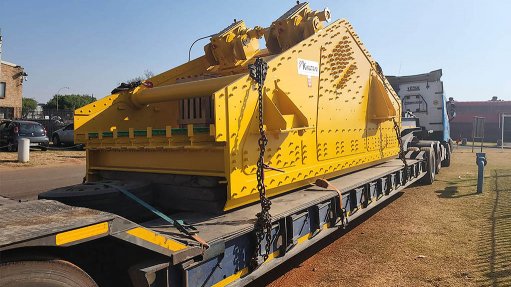
EASE OF USE The sensors and measurement equipment used by the company are based on a widely used technology
Vibrating-equipment manufacturer Kwatani is embracing the Fourth Industrial Revolution by providing condition-monitoring capability to complement its service offering.
Increasingly, customers are seeking original-equipment manufacturers (OEMs) that can offer the ability to remotely monitor vibrating equipment using available industrial and mining measurement technologies.
However, Kwatani COO Kenny Mayhew-Ridgers tells Mining Weekly that the company wanted to ensure that its sensing capability was effective, yet as simple and easy to maintain as possible, to avoid adding further burdens and complications for clients.
The sensors and measurement equipment used by the company are based on a widely used technology that is readily available and supported globally.
He adds that the motivation for using this technology is that it is not too specialised to make it unaffordable and not overly complicated such that Kwatani clients are unable to maintain it.
Importantly, Kwatani’s ability to process raw data makes the information useful for decision-making and planning. The vibrating-equipment experts at Kwatani make sure that the raw data elicited from the sensing equipment is processed into meaningful results that correctly and accurately interpret the unique calibrations and feedback from every vibrating screen.
“We don’t just stream raw data; we process it in such a way that our clients will get the most out of the information without their having to spend time and money on processing the raw data themselves,” Mayhew-Ridgers says.
“The company’s focus is on integrating with our customers’ existing infrastructure. Whether a greenfield or brownfield project, it is important that information be streamed seamlessly to databases, consequently enabling our clients to visualise and use the information effectively.”
Kwatani partners with system integrators to ensure that vibrating-screen performance and health information are easily and timeously communicated to clients for quick reaction and planning.
Moreover, going from paper-based checklists to paperless digital inspection and maintenance checklists not only benefits the environment but also improves transparency among the service technicians, foreman, engineers and the equipment OEM personnel on site, Kwatani senior mechanical engineer Simeon Pienaar explains.
“The power of information lies in the ability to visualise and analyse it. It is ineffective for paper-based reports to be filed in a cabinet somewhere, where the data is not scrutinised or interpreted and, therefore, the performance of the equipment is not adequately maintained.”
Digitised reporting systems are more effective at circulating the necessary data to those who need to see it and allow for more easy-to-read interpretations to be devised – such as graphs and charts – he adds.
“At a glance, one can see how the equipment is doing and whether there is a problem,” Mayhew-Ridgers explains, emphasising how paper-based forms are not only outdated but also less effective for traceability and processing.
“Having inspection and maintenance checklists in a digital format improves maintenance and procurement planning,” he says.
Once the equipment’s performance is digitally recorded, its current status and complete life-cycle history can be tracked, providing extremely useful information that can extend the life of the equipment.
“This data that keeps track of the product’s inspections, maintenance and operation over the span of its life can be very insightful. It can even lead to improvements in the design or the way in which it is operated from a production and efficiency point of view.”
Even the effect on a product of changing to a different grade of oil can be measured, as well as the installation’s life-cycle costing, Mayhew-Ridgers concludes.